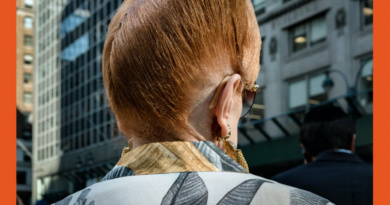An exhibition at the Museum Penzberg - Campendonk Collection is dedicated to the almost forgotten oeuvre of Joseph Mader in an extensive retrospective. The focus is on Mader's artistic (life) stages as well as his lifelong involvement with the work of Max Beckmann, which is also on display in the exhibition. Paintings, graphics, reverse glass paintings and sculptures by contemporary artists such as Willi Geiger, Fritz Winter, Karl Tratt, Marie von Motesiczky, Adolf Schinnerer, Max Wendl and Fritz Müller enter into a dialogue with Mader and vividly convey the moving atmosphere of the 1920s to 1940s and the post-war period.

Joseph Mader
Zirkus, 1929, Mischtechnik, Sammlung Städtische Galerie im Lenbachhaus
Beginnings and role models - an aspiring artist
Around 1930, Joseph Mader (1905-1982) was particularly impressed by the paintings and graphic works of Max Beckmann, who was on the rise during the Weimar period. After studying at the Munich Kunstgewerbeschule under Richard Riemerschmid, Mader became a master student of Friedrich Ahlers-Hestermann, a German student of Matisse. Like many contemporary artists, Mader was interested in Max Beckmann's provocative pictorial themes and formal structures, which is why the well-known Munich gallery owner and Beckmann admirer Günther Franke took notice of Mader. In 1932 Franke allowed him to have his first exhibition.

Joseph Mader
Katze mit Schädel, 1952, Tempera Pastell
Objectivities and Visibilities - after the Second World War
When the National Socialists came to power, Mader was at the beginning of his career and thus inevitably faced with the question of adapting or distancing himself. The withdrawal and lack of contacts that accompanied this situation made him an artist of the so-called "lost generation." After 1945, Mader continued his artistic career unperturbed by the political discussion about a reorientation of art as a representational, not abstract, painter. He likewise continued his inner dialogue with Beckmann, but now to distance himself inwardly. Mader placed his love for the mysterious "visibilities" of creation above Beckmann's hard-gripping view of the "objectivities" of the world.

Joseph Mader
Eulen, 1953, Mischtechnik, Sammlung Städtische Galerie im Lenbachhaus
The rediscovery of Joseph Mader - new perspectives
Under the title "Finding Joseph Mader", the grandson initiated a search for traces in 2018. This was the reason for the Museum Penzberg to investigate the question of how the public deals with artists' estates and what the role of museums is in this regard. The search for clues is recreated in the attic of the new building.

Joseph Mader in seinem Atelier, um 1930, Joseph Mader Archiv
With the exhibition, the Museum Penzberg wants to help an artist who has been forgotten by art history to gain visibility and at the same time expand the common narratives of the 20th century with new perspectives. The show was curated in collaboration with Dr. Angelika Grepmair-Müller, Dr. Felix Billeter and Maximilian Mader. To accompany the exhibition, the first monograph on Joseph Mader will be published by Deutscher Kunstverlag.
Joseph Mader – Sachlichkeiten, Sichtbarkeiten
26 March – 19 June, 2022
Museum Penzberg - Campendonk Collection
Am Museum 1, 82377 Penzberg, Germany










